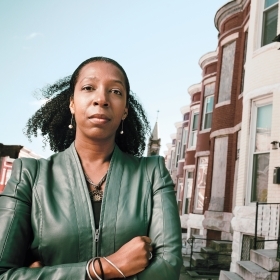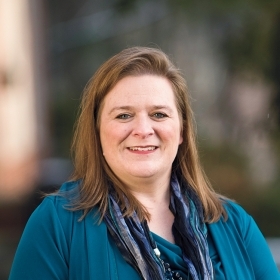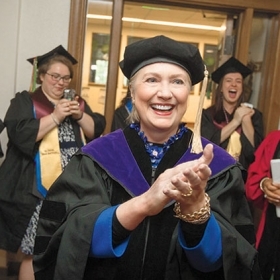An alternative spring break trip takes students to the civil rights South.
From the age of 7, Kindred Obas ’19 grew up in Alabama, surrounded by the landmarks and steeped in the lore of the civil rights era. But she came to see the movement, her home,...
From the age of 7, Kindred Obas ’19 grew up in Alabama, surrounded by the landmarks and steeped in the lore of the civil rights era. But she came to see the movement, her home, and her place in both in a new, revelatory light this past March, after revisiting the state on an alternative spring break trip called Confronting the Unacceptable: an Interfaith Engagement with the Civil Rights Movement.
Obas and seven other Wellesley students launched their weeklong journey at the Martin Luther King Jr. Center for Nonviolent Social Change in Atlanta, before traveling on to the Alabama cities of Birmingham, Montgomery, and Selma. On the fourth day, they toured Selma with civil rights activist Joanne Bland. She was 11 years old when she participated in the marches from Selma to Montgomery in 1965, including Bloody Sunday on the Edmund Pettus Bridge. Over the course of four hours with the Wellesley group, “Miss Joanne” shared her first-person account of the civil rights movement—events that the group had read about in March, the eye-opening graphic novel by civil rights leader John Lewis.
Before they parted ways, Bland confided in the students her hopes they’ll be “the generation we’ve been waiting for,” as she said, to continue the struggle for equal rights today. “That really got to me,” Obas says. Later that afternoon, she got to experience what that mantle might feel like, as the Wellesley group walked across the historic bridge themselves. It was an emotional and spiritual journey for Obas. The song “Amen” looped through her mind, and Bland’s reflections were fresh in her thoughts. “I was picturing what it would have been like to be there, to hold hands with everyone and walk across the bridge and feel so much faith flowing through everyone,” Obas says. “I was almost in tears over this idea of living in such turmoil and fear, with discrimination all around. But still, to go singing praises to God.”
The Office of Religious and Spiritual Life collaborated with Harambee House and Career Education’s civic engagement office to launch this pilot project examining the intersection of faith and social justice. While their days were filled with meetings with activists and religious leaders, in the evenings, the group “received the gracious hospitality of communities of faith,” says Tiffany Steinwert, dean of religious and spiritual life and one of the trip’s organizers.
Between visits to mosques, temples, churches, and meditation centers, Steinwert says she hoped the students would “think about the ways in which faith traditions across many different cultures have understood the central call through their faith to the liberation of all people. This isn’t just a history lesson. It’s a chance to see oneself in a long line of people of faith, people from nonfaith traditions, or people who organized together for the liberation of all.”
By the journey’s end, the participants were registering the fullest possible range of reactions—from hope to despair. But they shared a desire to bring the lessons they learned to the larger College community. For starters, they hope to present at next fall’s Tanner Conference, sharing photos and reflections from their journey. One student, Jenny Xie ’18, will spend the summer editing footage from the week for what could end up being an hourlong film.
For her part, Obas came away with a new clarity. An English major minoring in education, she has decided to return to Alabama to teach after graduation—a move she was undecided about before—to share how “the teaching of empathy and love and peace in the classroom can affect the future,” she says. “The trip showed me how I could bring the movement into my classroom, so it’s something kids can have a connection to, beyond just Black History Month, beyond just MLK and Rosa Parks. I felt like that’s going to be my part in the movement. I have to come back.”


